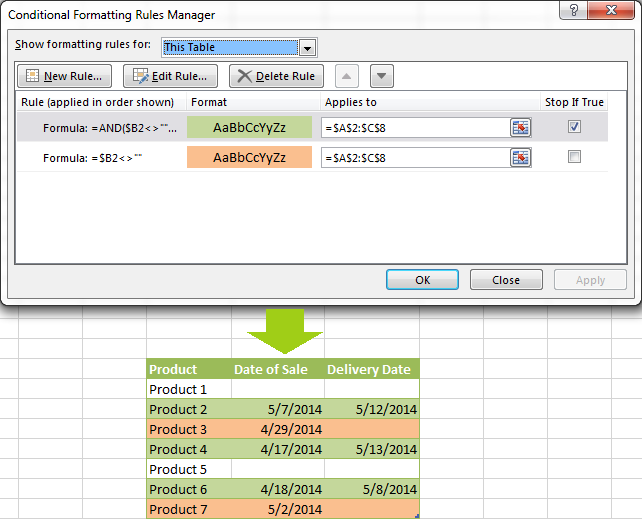


I've tried using the following formatting rule to apply to Column C but have not been successful. By default, excel has already provided us with many types of conditional formatting available to do with our data, but if any user wants the formatting done on specific criteria or formula, we can do so in the home tab of the conditional formatting section when we click on the new rule we will find an option for conditional formatting with. Not only does it make your spreadsheet look awesome, it also enables you to make sense of your data and spot important cues in the blink of an eye. Since I have non-negative numbers in my data, technically as long as Column D is zero and Column B is not zero, this would satisfy the formula. Conditional formatting allows you to automatically apply formattingsuch as colors, icons, and data barsto one or more cells based on the cell value.To do this, youll need to create a conditional formatting rule.For example, a conditional formatting rule might be: If the value is less than 2000, color the cell red. Conditional Formatting with Formulas in Excel. Conditional formatting takes the layout and design options for your Excel sheet to the next level. My goal is to set up a rule so that if any cell in Column D has a value of zero, and any cell (on the same row) in Column B has a value greater than zero, the corresponding row in Column C will still be highlighted in red. However, this does not work when a cell in Column D has a value of zero, and the corresponding cell in Column B has a value higher than zero, because the result would be infinity. Excel contains many built-in 'presets' for highlighting values with conditional formatting, including a preset to highlight cells greater than a specific value. I have a Conditional Formatting rule set up so that if any value in Column C is greater than 10%, the cell is highlighted in red. In this video youll learn the basics of using conditional formatting in Excel 2019 Excel 2016 and Office 365. Highlight all the rows you want to apply this too, then write the Conditional Formatting according to the very first row in your selection. Excel proposes different formulas to work with data. Note: You can enter this formula using the keyboard, for this example. I have a PivotTable that, for this example's sake, has three columns:Ĭolumn B contains non-negative number values.Ĭolumn D contains non-negative number values.Ĭolumn C shows the percent of change from Column D to Column B (ie, D1=1 and B1=2, C1=100%). The Conditional Formatting button in the Styles group of the Home tab in Excel 2016 enables you to apply provisional formatting to a cell range based solely on the categories into which its current values fall. The Criteria is a conditional statement that is similar to the conditional statement in the IF statement.


 0 kommentar(er)
0 kommentar(er)
